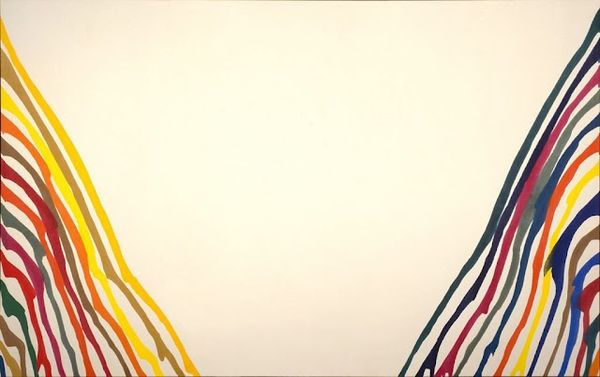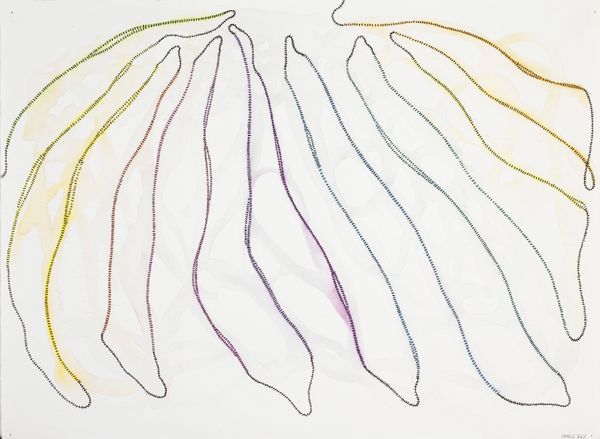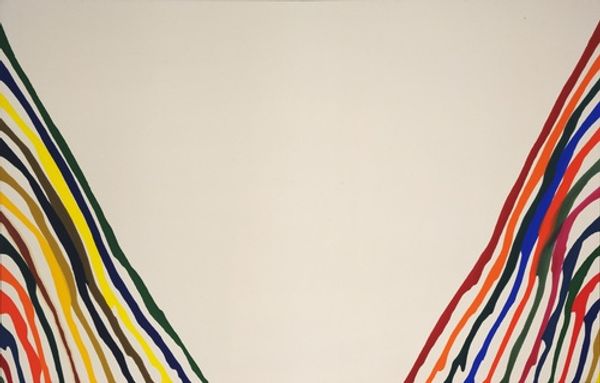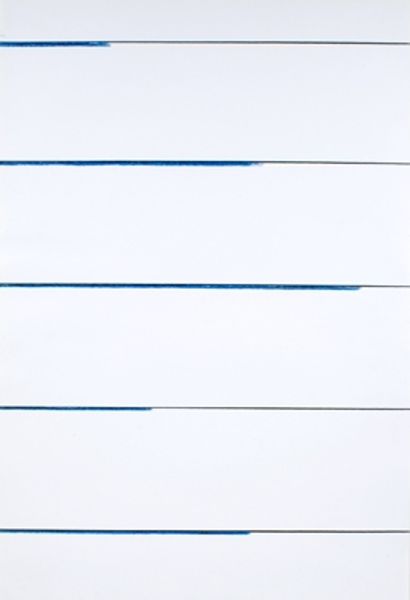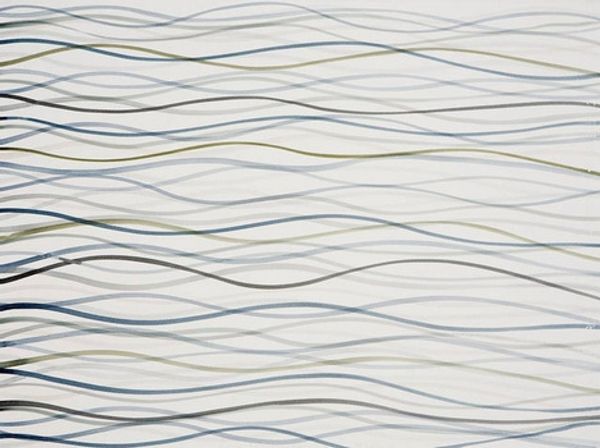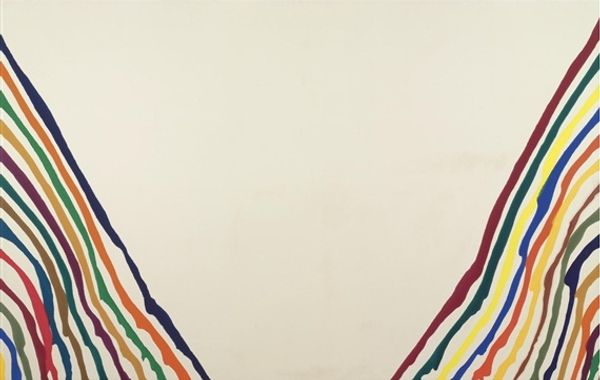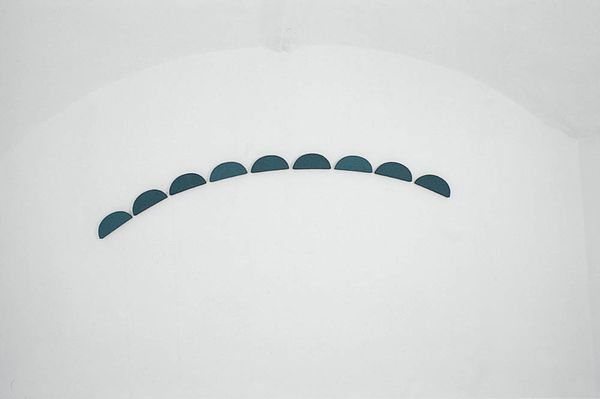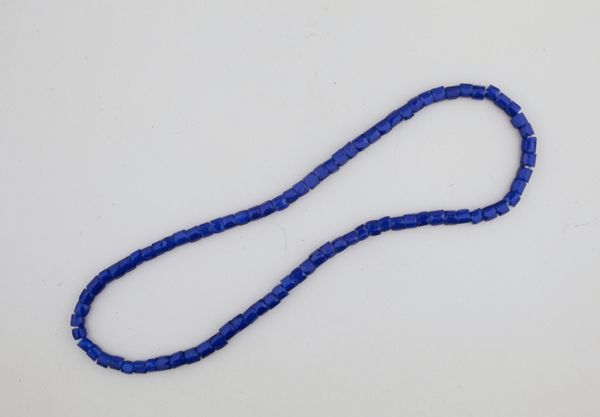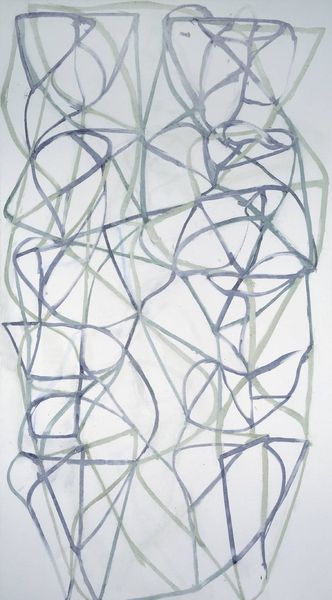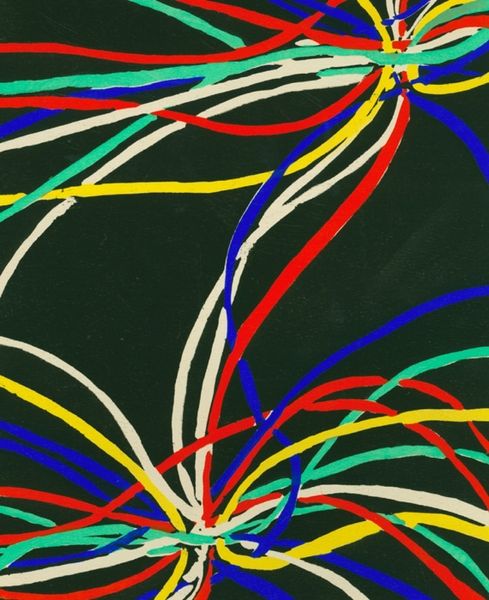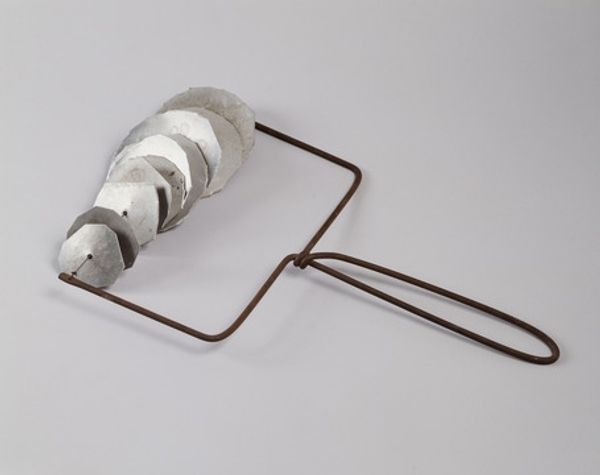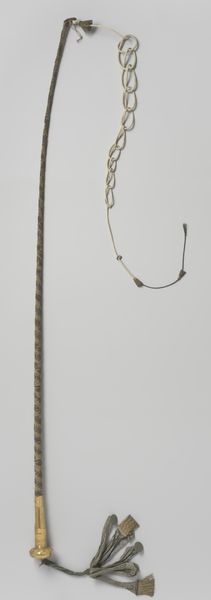
mixed-media
#
abstract-expressionism
#
mixed-media
#
organic
#
form
#
abstraction
#
line
Copyright: Eva Hesse,Fair Use
Curator: This is "Tomorrow's Apples (5 in White)," created by Eva Hesse in 1965. She worked with mixed media on this piece. It's a really striking example of her early work. Editor: Yes, striking is right. The first word that comes to mind is 'vulnerable.' There's something so exposed about those suspended cords. The way they dangle, almost umbilical. Curator: I find that such an insightful connection, actually, and it resonates with Hesse’s broader artistic themes. What we see here reflects the language of the body; and those subtle shifts in color speak volumes. Editor: Tell me more about that color play – the fading hues, the muted palette against the bright cords. Curator: Well, Hesse plays with subtle gradations of color – almost pastel – alongside brighter sections of each cord. This could symbolize growth, decay, and cycles of renewal. But it’s interesting to look at this piece in light of Hesse's Jewish heritage and experience as a refugee. The repetitive forms—these "apples"—could reflect the recurring symbols and motifs we find across cultures confronting trauma. Editor: Ah, you see a communal narrative in what I perceived as primarily personal and embodied! The vulnerability can easily translate into displacement and seeking stability. Knowing this piece was created during a time when Minimalism was ascending yet so devoid of affect, it's fascinating how she embraced emotionality within a similarly spare formal vocabulary. Curator: Absolutely. I think what we see is a deeply humanistic response. While Hesse shared certain formal concerns with Minimalists, her emphasis was always on texture, imperfection, the human touch that subverts mechanical regularity. Editor: The surface has a clear presence. There’s something about that slightly yellow, textured ground—not quite a background, but very tactile and inviting—that offsets the hard-edged forms one typically associates with that mid-century focus on geometry. It really warms the scene, I must say. Curator: Precisely. And notice how Hesse introduces asymmetry and slightly unpredictable intervals, playing against rigid seriality to introduce emotional cadence. It has such an important function as we interpret the objects and the symbolic language they have. Editor: Indeed, so it's not so much about deconstruction as it is a re-imagining. It presents a softening effect through the hand-rendered and highly organic sensibility, defying industrial sleekness. I see a gentle rebellion there. Curator: Yes, exactly. By subverting those industrial sensibilities, Hesse asserts the primacy of individual experience, opening up artmaking to more fluid possibilities. It’s about more than the literal imagery we perceive here; the act of interpretation is the actualization of Hesse’s intended meaning. Editor: Looking closely at "Tomorrow’s Apples," one senses not resolution, but potent, unresolved tensions. Which speaks to me profoundly!
Comments
No comments
Be the first to comment and join the conversation on the ultimate creative platform.
